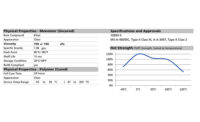Strategic Solutions
Developing An Adhesive and Sealant Selection Guide
The challenge in developing a useful guide involves balancing comprehensive coverage of in-scope topics without inevitably getting lost in the proverbial weeds.

Henkel product image
Buyers and end users of adhesives and sealants―who are new to adhesives technology―want to learn all they can about chemistries, resin types, application methods, performance properties, dissimilar substrates, engineering practices, and formulated products on the market. Having spent over 30 years as senior materials engineering manager for a major OEM truck manufacturer, I enthusiastically accepted the leadership role in the Adhesive and Sealant Council’s (ASC) Growth Task Force, which involved taking the lead to develop the ASC’s recently released resource for adhesives’ end users, “OEM Paint Shop, Trim, and Final Assembly Adhesive & Sealant Selection Guide.”
My newfound role in this project was reminiscent of an earlier time in my career as a new and inexperienced user of adhesives and sealants. I can still vividly recall having to painstakingly work through each adhesive and sealant application without the benefit of my current knowledge. My challenge was to make sense of a patchwork of internal documentation—material specifications and application instructions—which I worked through with our line support engineers. The goal was to ensure we were complying with engineering intent while refining our applications and documentation for continuous improvement. The application instructions went from older, hand-drawn drafting artwork quality to “new” CAD 2D line drawings, which were virtually useless and impossible to decipher. We went through various iterations of technology and new engineers trying to decipher the last set of instructions that looked good at the time. I recall continually being disappointed that, at the end of each project, our internal documentation wasn’t nearly as comprehensive as it could be.
Consequently, as I moved up in the ranks, training and developing new engineers and chemists, I made a point of assigning my team the task of thoroughly learning every aspect of our internal process, including materials, testing protocols, and specifications, as well as becoming well-acquainted with all external resources such as supplier sales reps and technical support. While we continually strived to improve our internal documentation, it tended to remain inadequate (i.e., it didn’t measure up to my standards) because our business priorities led us elsewhere.
In today’s complex (and lean) manufacturing environment, material engineers are similarly juggling too many responsibilities with even fewer resources. Given that experienced engineers and chemists are retiring or taking other opportunities at significantly higher rates these days, knowledge transfer seems more elusive now than when I was coming up through the ranks. In essence, I am paying forward to the next generation of end users what I didn’t have access to over three decades ago.
That said, the scope of the ASC’s guide was more than a little daunting to me. Our challenge in developing the guide was balancing comprehensive coverage of in-scope topics without inevitably getting lost in the proverbial weeds. Each slice of this guide has much more technology behind it than is presented. Please dig deeper with the help of your suppliers.
I sincerely hope we struck the balance for which we strived, and that the guide will amply serve materials engineers and OEM shop personnel for the next decade. Equally important, I hope the guide will spawn and renew interest in materials engineering among readers and inspire continued study among shops dedicated to painting, trim, and assembly of the highly technical aspects of adhesive bonding and sealing.
Daniel R. Daley is a senior consultant with The ChemQuest Group Inc. For more information, visit www.chemquest.com.
Looking for a reprint of this article?
From high-res PDFs to custom plaques, order your copy today!






